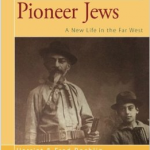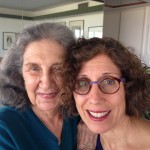 My nominee for one of the most intriguing book titles ever is “Pioneer Jews.” It is not an oxymoron! As this deeply researched, terrifically readable history by Harriet and Fred Rochlin makes clear, Jewish immigrants to America in the 19th century didn’t just settle in New York or Chicago. Many followed the great migration to the West. Jews rode the range on cattle ranches – I kid you not, one of my favorite features in the book is a two-page spread of cattle brands used by Jewish ranchers. Jews wore lawmen’s badges – Emil Harris was a Los Angeles police chief known who, the Rochlins write, “captured bank robbers, solved murders and larcenies, controlled the flourishing opium dens and brothels, and cracked down on juvenile delinquency.”
My nominee for one of the most intriguing book titles ever is “Pioneer Jews.” It is not an oxymoron! As this deeply researched, terrifically readable history by Harriet and Fred Rochlin makes clear, Jewish immigrants to America in the 19th century didn’t just settle in New York or Chicago. Many followed the great migration to the West. Jews rode the range on cattle ranches – I kid you not, one of my favorite features in the book is a two-page spread of cattle brands used by Jewish ranchers. Jews wore lawmen’s badges – Emil Harris was a Los Angeles police chief known who, the Rochlins write, “captured bank robbers, solved murders and larcenies, controlled the flourishing opium dens and brothels, and cracked down on juvenile delinquency.”
As a reviewer wrote in the Chicago Sun-Times when “Pioneer Jews” first came out in 1984, “When people think of the Jewish immigrant experience, it’s usually the Lower East Side of New York that comes to mind. But, in fact, thousands of Jews lived in western mining towns and on ranches and trading posts in the late nineteenth century. In this colorful history of Jewish settlers in the West . . . that stereotype of the urban Jew is vigorously and even exuberantly rejected.”
 “Exuberance” is a quality that characterizes Harriet Rochlin herself. I read “Pioneer Jews” when I started my research for “The Tin Horse” and discovered that Harriet had grown up in my novel’s setting, the Los Angeles neighborhood of Boyle Heights in the 1920s and 30s. I sent her a note: would she be willing to talk to me? She generously shared her time, information, and enthusiasm. She was a wonderful source of information, offering both the you-are-there immediacy of having lived in Boyle Heights and the historian’s skill of seeing things in a larger perspective. And, despite being busy with her own book projects, she always responded promptly and thoroughly to questions I emailed her. She even shared her family photographs for my video; the shot of two girls, when I talk about Elaine and Barbara, is actually a photo of Harriet and her sister!
“Exuberance” is a quality that characterizes Harriet Rochlin herself. I read “Pioneer Jews” when I started my research for “The Tin Horse” and discovered that Harriet had grown up in my novel’s setting, the Los Angeles neighborhood of Boyle Heights in the 1920s and 30s. I sent her a note: would she be willing to talk to me? She generously shared her time, information, and enthusiasm. She was a wonderful source of information, offering both the you-are-there immediacy of having lived in Boyle Heights and the historian’s skill of seeing things in a larger perspective. And, despite being busy with her own book projects, she always responded promptly and thoroughly to questions I emailed her. She even shared her family photographs for my video; the shot of two girls, when I talk about Elaine and Barbara, is actually a photo of Harriet and her sister!
Over the eight years in which I worked on “The Tin Horse,” Harriet has become a friend and treasured role model. From everything she’s told me about Fred’s joie de vivre and creativity, I’m so sorry that I didn’t have the chance to meet him; he passed away in 2002.
Harriet has just completed exhaustive work to update the rights information for the 219 historical photos in the book and has released a new edition of this outstanding book. Here’s where you can buy it!
Tags: Boyle Heights, Harriet Rochlin, Jews in the West, Pioneer Jews